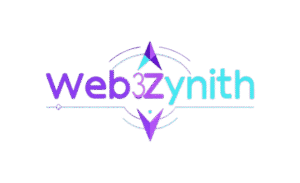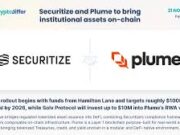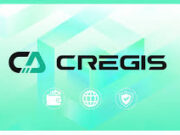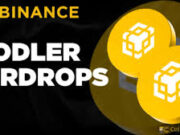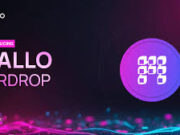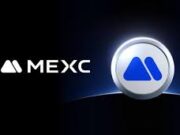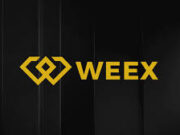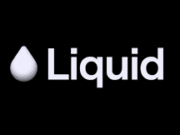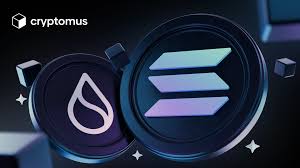In the fast-evolving world of blockchain technology, two Layer-1 giants, Solana and Sui, are vying for dominance in 2025. Both promise lightning-fast transactions, low fees, and scalability, making them top choices for decentralized applications (dApps) in DeFi, NFTs, and gaming. But which blockchain is better suited for developers, investors, and users? This blog dives into the technical architectures, ecosystems, and market dynamics of Solana vs. Sui to help you decide which one might lead the pack.
Solana: The Veteran Speed King
Launched in 2020 by Solana Labs, founded by Anatoly Yakovenko, Solana has cemented its reputation as a high-performance blockchain. Its unique Proof-of-History (PoH) combined with Proof-of-Stake (PoS) enables a theoretical throughput of 65,000 transactions per second (TPS), with real-world averages around 4,500 TPS. Solana’s low fees—often fractions of a cent—and sub-second finality (around 400 milliseconds) make it a favorite for DeFi protocols, NFT marketplaces, and meme coins like BONK.
Key Features:
- Consensus Mechanism: PoH timestamps transactions, allowing parallel processing and reducing validator coordination, paired with PoS for security.
- Programming Language: Uses Rust and C, offering high performance but a steeper learning curve for developers, often described as “chewing glass.”
- Ecosystem: Boasts over 2,000 projects, $5.5 billion in Total Value Locked (TVL), and partnerships with Visa, Stripe, and Circle for payments. Solana’s Saga phone integrates crypto functionality, enhancing user adoption.
- Developer Activity: Over 30,000 developers, supported by tools like Solana CLI, Web3.js, and Anchor.
- Challenges: Past outages (e.g., 2024) and network congestion during high-volume events have raised reliability concerns, though uptime improved significantly in 2023. The upcoming Firedancer upgrade could push TPS to 1 million.
Market Performance: As of June 2025, SOL trades at ~$161 with a $85.8 billion market cap. Its all-time high of $294.33 came in early 2025, driven by developer activity and institutional interest. Solana’s token has no max supply, with inflation tapering to 1.5% annually, but 80% of tokens are circulating, reducing dilution risk.
Sui: The Next-Gen Contender
Sui, launched in May 2023 by Mysten Labs (ex-Meta Diem developers), is a newer but rapidly rising Layer-1 blockchain. Built with the Move programming language, Sui’s object-centric model and Narwhal-Tusk (DAG-based) consensus with Byzantine Fault Tolerance enable parallel transaction execution, boasting a theoretical 297,000 TPS and 390-millisecond finality.
Key Features:
- Consensus Mechanism: Narwhal-Tusk separates consensus from execution, allowing simple transactions to skip consensus for instant processing. Mysticeti, a 2024 upgrade, reduced latency by 80%.
- Programming Language: Move prioritizes security, eliminating vulnerabilities like reentrancy attacks, and offers a smoother developer experience than Rust.
- Ecosystem: Still growing with ~90 projects and $1.75 billion TVL, Sui focuses on gaming (e.g., SuiPlay0X1 console), DeFi, and NFTs. Circle’s USDC integration in 2024 boosted liquidity. Daily active addresses hit 1.5 million in 2025, up 137% year-to-date.
- Developer Activity: Saw a 219% rise in active developers (1,400 by mid-2024), supported by Move Studio and partnerships with Andreessen Horowitz and Coinbase Ventures.
- Challenges: Sui’s ecosystem is less mature, with fewer dApps and a smaller user base. Only 27% of its 10 billion token supply is circulating, raising concerns about future unlocks and potential sell-offs.
Market Performance: SUI trades at ~$3.68 with a $12.42 billion market cap, up 246% in the past year, hitting an all-time high of $5.35 in January 2025. Its finite 10 billion token supply offers clarity, but unlocks pose risks.
Head-to-Head Comparison
| Metric | Solana | Sui |
|---|---|---|
| TPS (Theoretical) | 65,000 (1M with Firedancer) | 297,000 |
| Finality | ~400ms | ~390ms |
| Consensus | PoH + PoS | Narwhal-Tusk (DAG + BFT) |
| Programming Language | Rust, C | Move |
| TVL | $5.5B | $1.75B |
| Daily Active Addresses | 5.4M | 1.5M |
| Developer Count | 30,000+ | ~1,400 |
| Market Cap | $85.8B | $12.42B |
| Circulating Supply | 80% (519.8M/600.9M) | 27% (2.85B/10B) |
Strengths and Weaknesses
Solana Strengths:
- Mature ecosystem with proven scalability in DeFi, NFTs, and payments.
- Strong institutional backing and regulatory legitimacy, with ETF potential.
- Large developer community and established tools.
Solana Weaknesses:
- History of outages and congestion during peak usage.
- Rust’s complexity can deter new developers.
- No max token supply introduces long-term inflation concerns.
Sui Strengths:
- Superior theoretical TPS and parallel processing for unmatched scalability.
- Move language enhances security and developer accessibility.
- Innovative projects like SuiPlay0X1 and USDC integration signal growth potential.
Sui Weaknesses:
- Smaller ecosystem and user base compared to Solana.
- High token unlock risk with only 27% circulating.
- More centralized with fewer validators (8 vs. Solana’s ~1,900).
Which Blockchain Wins for dApp Development?
For developers, the choice depends on project needs:
- Solana is ideal for large-scale DeFi, NFT marketplaces, or payment-focused dApps requiring a battle-tested ecosystem and institutional integrations. Its mature tools and community support rapid deployment, despite Rust’s learning curve.
- Sui shines for projects prioritizing security, parallel scalability, and innovation, like gaming or next-gen DeFi. Move’s simplicity and Sui’s predictable gas fees make it attractive for startups, but its smaller ecosystem means less immediate traction.
Investment Outlook for 2025
From an investment perspective, both blockchains offer unique risk-reward profiles:
- Solana: A safer bet with its established position, institutional interest, and potential ETF approval. Analysts predict SOL could hit $192-$500 by year-end, driven by ecosystem growth and upgrades like Firedancer. However, its growth may be less explosive than in 2021.
- Sui: Higher risk, higher reward. With a smaller market cap, SUI has more room for growth, with forecasts ranging from $4.71 to $200 in Q1 2025, fueled by ecosystem expansion and USDC adoption. Token unlocks remain a concern.
Posts on X reflect bullish sentiment for both, with some calling Sui “the next Solana” due to its tech and inflows ($737.6M in 2024 vs. Solana’s $1.1B). Others argue Solana’s finality improvements (nearing 400ms) neutralize Sui’s edge.
The Verdict
Solana remains the gold standard for high-performance blockchains in 2025, with a robust ecosystem and proven track record. Sui, however, is a formidable challenger, leveraging cutting-edge tech and rapid developer growth to close the gap. For developers, Solana offers stability, while Sui promises innovation. For investors, Solana is steadier, but Sui’s upside is tantalizing.
Rather than a “Solana killer,” Sui is carving its own niche, particularly in gaming and secure dApps. Both blockchains are likely to coexist, shaping Web3’s future. Your choice depends on your priorities—stability or potential, maturity or disruption.
Disclaimer: This is not financial advice. Cryptocurrency investments are volatile. Conduct your own research before investing.
Sources:
- Technical details from Antier Solutions, Messari, and Chainspect
- Market data from CryptoTimes and CoinCodex
- Ecosystem insights from CoinBureau and Altcoin Buzz
- Sentiment from X posts
